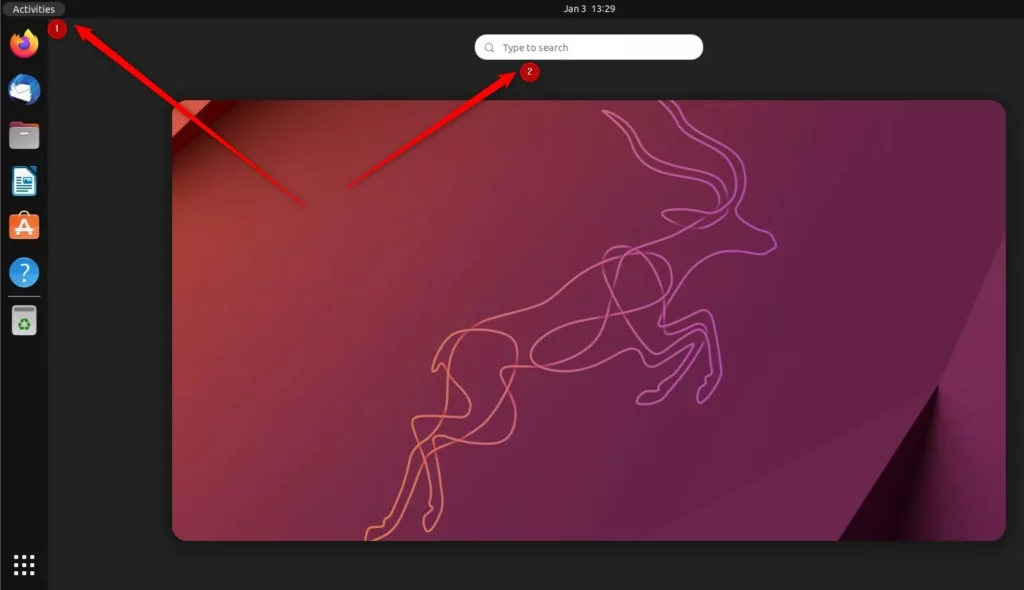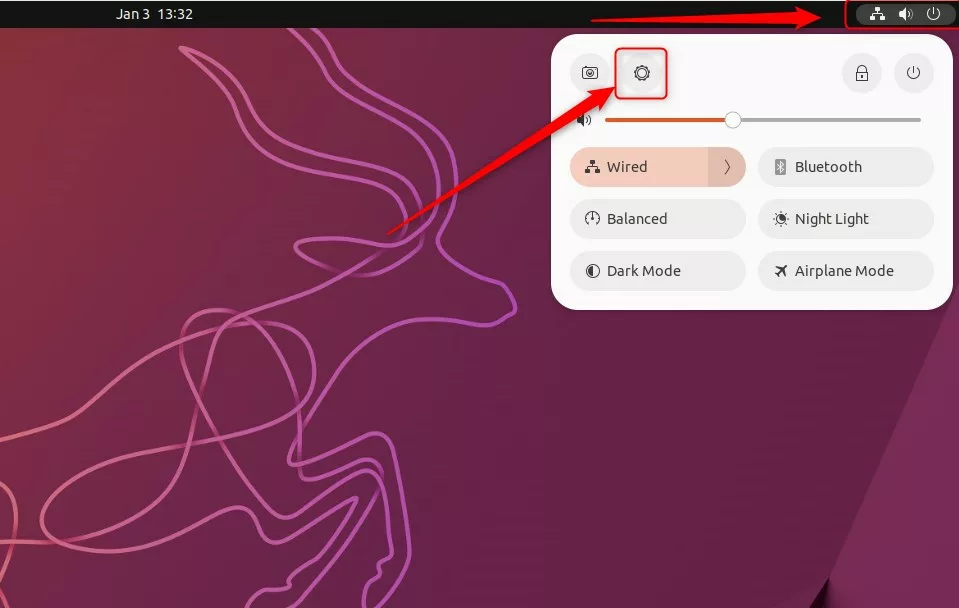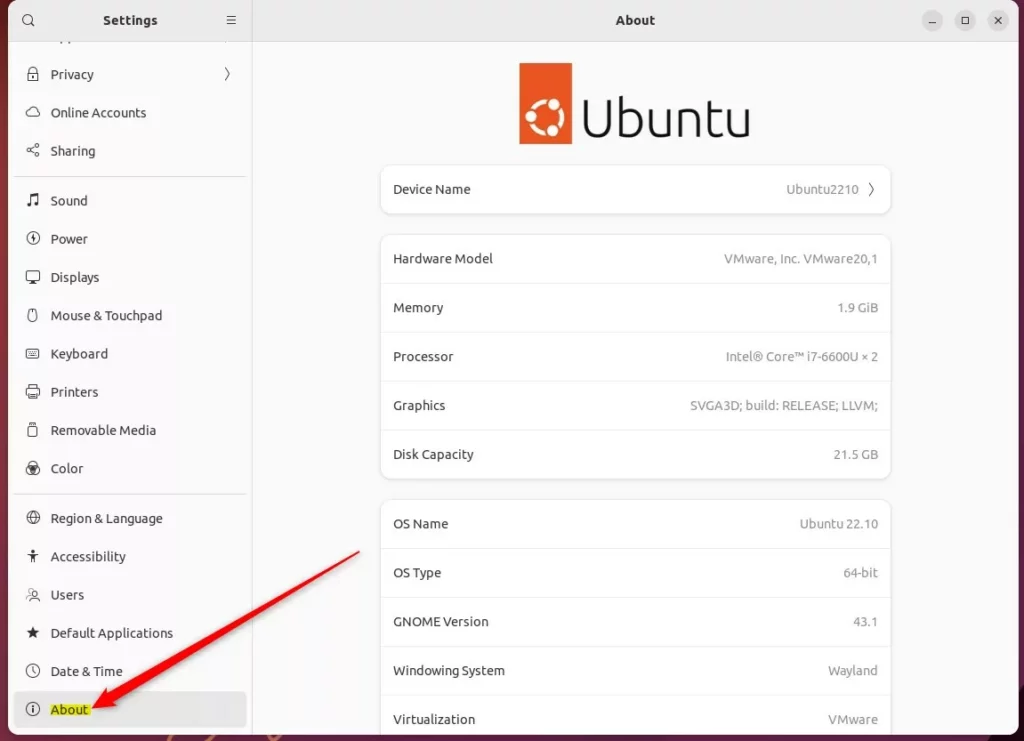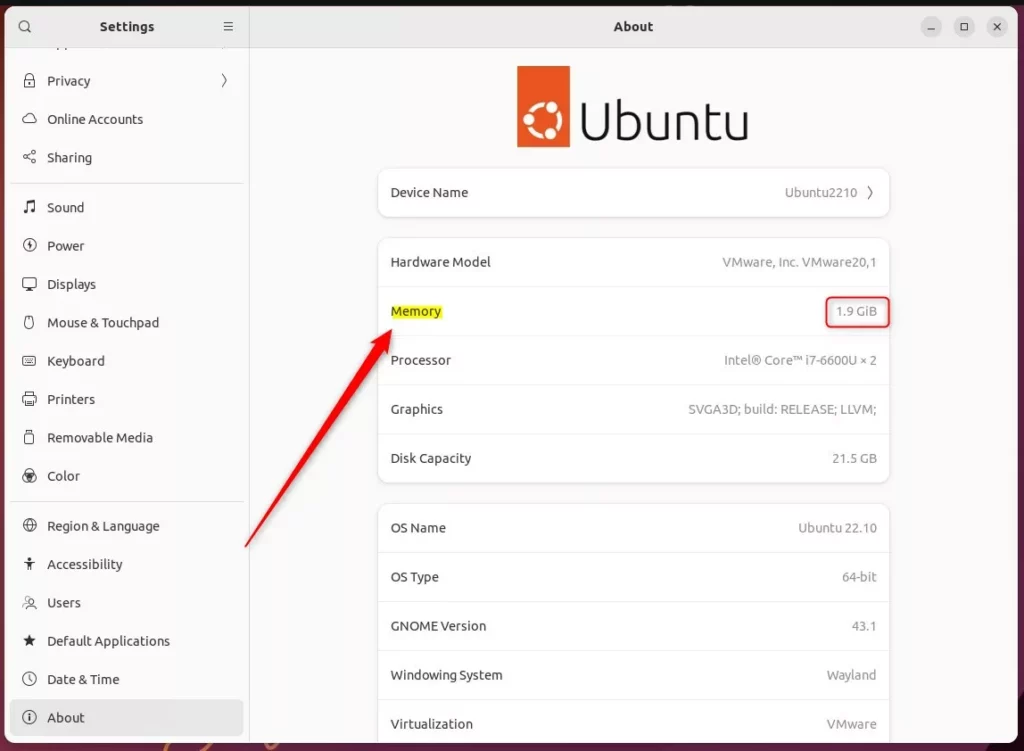This article describes the steps to check the system RAM on Ubuntu Linux.
Knowing the RAM installed on your computer with Ubuntu Linux may be useful when drawing up requirement specs. In addition, Ubuntu Linux has many tools that users can use to check available RAM on a machine.
Below, we’ll go through some of the tools you can use. There are some pros and cons to all of them. However, all should work similarly, except a few may provide more information than others.
With the steps below, you will be able to check the system RAM and gather the following information:
- RAM size
- Free RAM
- Type and speed of RAM
Check RAM size and speed on Ubuntu Linux
As stated above, knowing the RAM installed on your computer with Ubuntu Linux may come in handy when drawing up requirement specs.
Below are some of the tools to use to check the system RAM on Ubuntu Linux.
Ubuntu Linux has a centralized location for the majority of its settings. From system configurations to creating new users and updating, all can be done from the System Settings panel.
To get to System Settings, open the Activities overview and start typing Settings.

Alternatively, click on the System menu at the top-right corner of the top bar on your desktop.
On the System menu, select Settings, as highlighted below.

In the Settings app, scroll down the menu items on the left and click on the About tile.

On the System Settings -> About settings panel, locate the Memory line and see the memory installed on the System.

Check system memory using the command line
On Ubuntu Linux, users can use the terminal to view details of the system RAM. In addition, commands such as free, watch, top, and dmidecode can display more information.
You can use the free command with the -h command option to display the amount of free and used memory (RAM) in the System.
Ex.
free -h
The commands should output similar lines as below:
total used free shared buff/cache available Mem: 1.9Gi 1.4Gi 113Mi 20Mi 440Mi 383Mi Swap: 2.1Gi 109Mi 2.0Gi
Using the watch with the free command gives you live RAM information that refreshes every 2 seconds.
watch free
Another useful command to display stem RAM is the top command.
top
By default, the top command output is sorted by CPU consumption. However, you can press Shift+M to sort it by memory.

For more details, RAM information, including RAM types and slots used, use the commands below.
sudo dmidecode --type memory
The command should output similar lines to the one below.
# dmidecode 3.4 Getting SMBIOS data from sysfs. SMBIOS 2.7 present. Handle 0x0096, DMI type 16, 23 bytes Physical Memory Array Location: System Board Or Motherboard Use: System Memory Error Correction Type: None Maximum Capacity: 3 GB Error Information Handle: Not Provided Number Of Devices: 64 Handle 0x0097, DMI type 17, 40 bytes Memory Device Array Handle: 0x0096 Error Information Handle: No Error Total Width: 64 bits Data Width: 64 bits Size: 2 GB Form Factor: DIMM Set: None Locator: RAM slot #0 Bank Locator: RAM slot #0 Type: DRAM Type Detail: Synchronous Speed: Unknown Manufacturer: VMware Virtual RAM Serial Number: 00000001 Asset Tag: Not Specified Part Number: VMW-2048MB Rank: Unknown Configured Memory Speed: 4800 MT/s Minimum Voltage: 1.2 V Maximum Voltage: 1.2 V
That should do it!
Conclusion:
- Understanding your system’s RAM specifications is crucial for requirement specifications
- Ubuntu Linux provides various tools to check system RAM, including the System Settings panel and command line tools
- By following the outlined steps, you can retrieve essential information such as RAM size, free RAM, and type/speed of RAM
- Utilize the command line tools such as
free,watch,top, anddmidecodeto access in-depth RAM details - Checking and displaying RAM details on Ubuntu Linux is an important step in system maintenance and troubleshooting

Leave a Reply